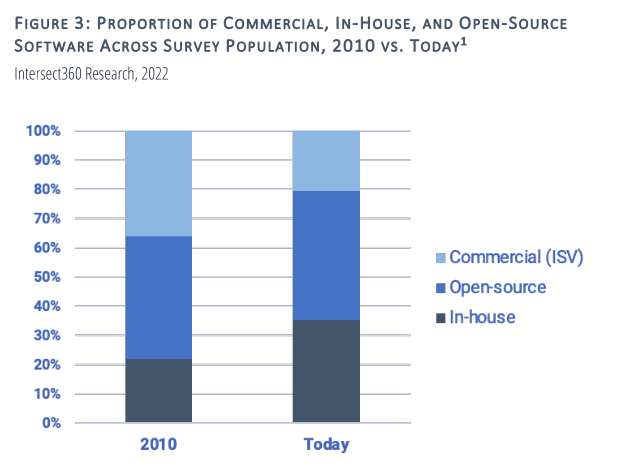Careers in numerical computation
Contents
Careers in numerical computation#
Today#
Research
National Labs
Industrial R&D
Academia
Production
Cloud and hardware
Independent Software Vendors (ISV)
Open source/services companies
Engineering companies
Friday#
Fast Fourier Transform
Monte Carlo integration
National Labs#
Department of Energy
Office of Science (Berkeley, Argonne, Pacific Northwest, …)
National Nuclear Security Administration (Livermore, Los Alamos, Sandia)
Office of Renewable Energy (NREL)
National Oceanic and Atmospheric Administration (NOAA)
Weather and climate, operational numerical weather prediction and research
National Center for Atmospheric Research (NCAR)
Comprehensive climate focus (includes ocean, sea ice, land ice, land)
National Institute of Standards and Technology
Fundamental materials (e.g., gas equations of state), metrology
National Aeronautics and Space Administration (NASA)
Earth research, especially remote sensing (satellite and aerial)
Fluid and structural mechanics for safe, reliable, efficient flight (includes partnerships with FAA)
Materials science and engineering (overlapping scope with industry)
Examples of lab/agency-led software#
HPC Middleware (MPI implementations, resource managers)
Numerical Libraries (PETSc, hypre, Sundials, Trilinos, MFEM)
Open source simulation applications (MOOSE library, LAMMPS, Nek, Albany)
Internal/export controlled simulation (BLAST, FUN3D, Sierra, MCNP, MOOSE apps)
Nuclear reactor safety, stockpile stewardship, proprietary designs
Community Earth System Model (NCAR), Energy Exascale Earth System Model (E3SM)
Some orgs publicly embrace open source LLNL Open Source
Industrial R&D#
Hardware vendors and cloud providers: CUDA, HIP, SYCL, OpenMP, MPI
“Science/engineering should use our programming models/run fast on our hardware”
“Data science” (statistical computing) should also be fast
High-stakes methods development
Example: High-Lift Prediction Workshop (participants)
Research papers in specific venues are valuable
Windows into industrial research culture
Who participates in comparison studies, standards organizations, etc.?
Who attends technical conferences (not trade shows) and holds elected positions in professional societies?
Academia#
Tenure-track
Teaching
External funding is mainly to support students and research staff
Eternally swimming in hats
Research faculty/research software engineer
Usually reliant on external grants, often a “center”
There are some “research software engineering” facility/service groups (e.g., Princeton)
CU Institutes (CIRES, INSTAAR, LASP, JILA, BioFrontiers, …)
Independence, transparency, and security#
Competitive government funding
Grant review panel, process to avoid conflicts of interest
Applicants receive reviews with positive and negative
Often low funding rate (e.g., 10% of proposals get funded)
Acadamics can apply to any agency, DOE labs only eligible for DOE funding
Block government funding
NNSA funding for classified work; mission-oriented work at other agencies
Internal review process, may be formal (“LDRD”) but likely doesn’t avoid CoI (reviewed by your management chain)
Industry
Often informal process to influence management decisions
Depends more on personal trust, likely more dependent on individual managers (can change rapidly with reorg)
Since no formal process or external review, minimal feedback
Production#
Cloud and hardware vendors
build or contribute to numerical libraries
use numerical computing to design silicon, optimize fabrication process
use numerical computing to design and optimize data centers, analyze workloads
Independent Software Vendors
Geometric modeling/CAD, simulation (ANSYS, Abaqus, etc.)
Matlab, Mathematica, etc.
Open source/services
Distribution/integration: Posit (aka. RStudio), Enthought, Continuum, QuanSight
Training/consulting/support: OpenFOAM
Various large tech companies have people doing open source numerical library development
Engineering companies
Growing in-house simulation tools
Larger companies can afford to make these tools

What does technical leadership look like?#
Projects#
Motivation
What you did and how
Results and interpretation
Examples of positive and negative impacts/risks
